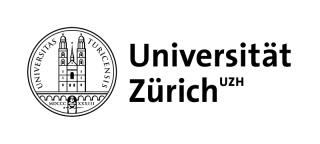■ Data Alchemy–Observing Patterns from Galileo to Artificial Intelligence
Co-curation of a group exhibition with Adrian Notz (ETH AI Center)
Co-curation of a group exhibition with Adrian Notz (ETH AI Center)
Collegium Helveticum, ETHZ Zürich 2023
Based on the history of the Semper Observatory, this exhibition explores the human fascination with the creation of meaning from patterns such as the constellations of stars and planets and, today, from all kinds of extracted data. Today’s methods that help in recognizing patterns include a diverse range of artificial intelligence algorithms and applications, often used for predictions and prognostics. The exhibition brings together scientists, academics, and artists who react to, reflect on, and work with these methods.
When we look back in time, one could say that the move to predictions and prognostics from the earlier practice of prophecies is really
just a matter of dimension and scale. Because, even if the religious beliefs faced by Copernicus and Galileo in the 15th to 17th Centuries seem to stand in harsh contrast to the scientific research being done today, these fields can be understood as two positions on a continuum, ranging from reading prophecies in the sky and mystical approaches to making predictions using computational power.
In fact, this past is still present today. Not only do parascientists and esoterics use early religious mystical texts in which astronomical
and mathematical patterns are embedded, but scientific researchers
also examine these texts as early forms of computational writing,
i.e. as codes and algorithms. What is more, when we move to the specialized field of computer science research into machine learning which relies on human intelligence and the brain as a reference for creating what we now call artificial intelligence—both scientists and engineers sometimes understand only the input and the output of these deep learning artificial neural networks. That is why this area of research is often considered a black box and—harking back to the older practices again—referred to as “Data Alchemy.”
The openness of today’s scientists and engineers towards different ways of understanding the world, seems to be closing the gap between science and art, mysticism, and other systems. Connecting code to cosmology and scaling from predictions and prognosis to prophecies links us to more holistic and plural modes of knowledge creation. And it may ultimately lead us to a terrestrial understanding of humans as a part of the biosphere on this planet.
The exhibition and the accompanying events are part of the Zurich Art Weekend 2023 program. During three days, from June 8 to June 11, the Zurich Art Weekend aims to facilitate access to culture and shed new light on the art scene of Zurich.
Participating artists: Hannes Bajohr, Daniel Berio, Tiziano Derme, Rohini Devasher, liat grayver, Dr. Barbara Imhof, Yasmine Meroz, Daniela Mitterberger, Omar W. Nasim, Marcus Nebe, Robert Nißler, Oliver Sahli, Christopher Salter, Liat Segal, Solveig Suess, Jennifer Wadsworth, PhD, Christian Waldvogel
Photos by Marcus Nebe




































